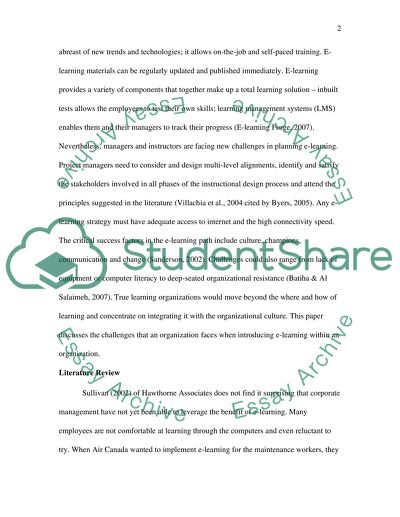Cite this document
(“What are the challenges associated with introducing e-learning within Essay”, n.d.)
What are the challenges associated with introducing e-learning within Essay. Retrieved from https://studentshare.org/miscellaneous/1542688-what-are-the-challenges-associated-with-introducing-e-learning-within-organisations
What are the challenges associated with introducing e-learning within Essay. Retrieved from https://studentshare.org/miscellaneous/1542688-what-are-the-challenges-associated-with-introducing-e-learning-within-organisations
(What Are the Challenges Associated With Introducing E-Learning Within Essay)
What Are the Challenges Associated With Introducing E-Learning Within Essay. https://studentshare.org/miscellaneous/1542688-what-are-the-challenges-associated-with-introducing-e-learning-within-organisations.
What Are the Challenges Associated With Introducing E-Learning Within Essay. https://studentshare.org/miscellaneous/1542688-what-are-the-challenges-associated-with-introducing-e-learning-within-organisations.
“What Are the Challenges Associated With Introducing E-Learning Within Essay”, n.d. https://studentshare.org/miscellaneous/1542688-what-are-the-challenges-associated-with-introducing-e-learning-within-organisations.


